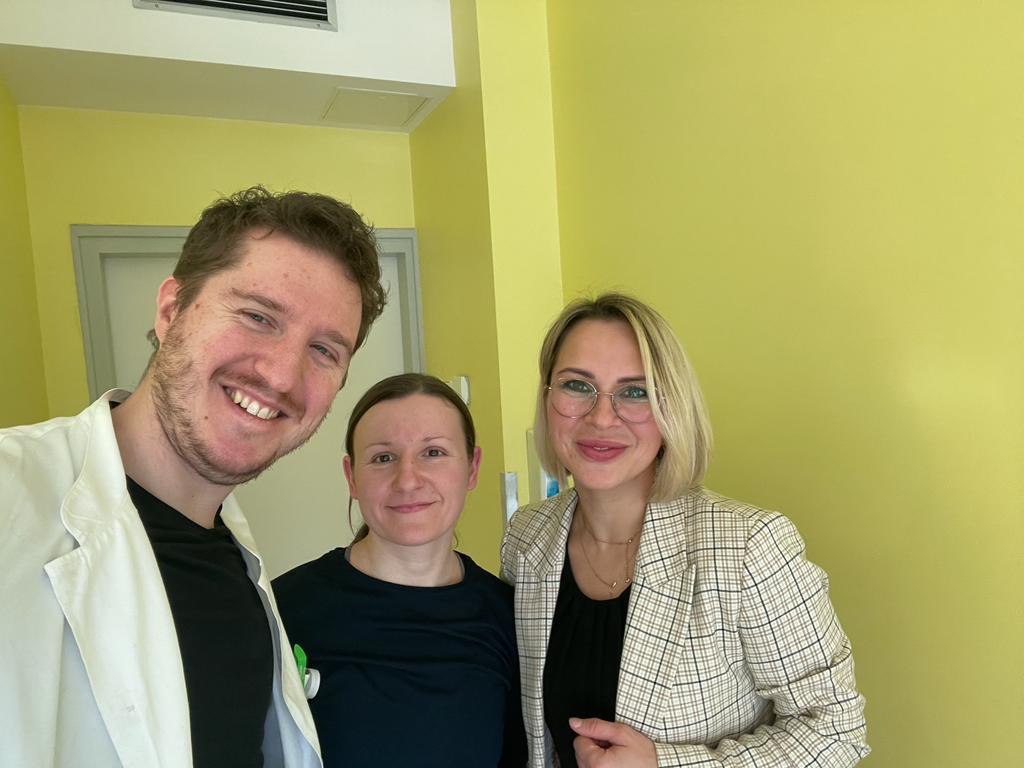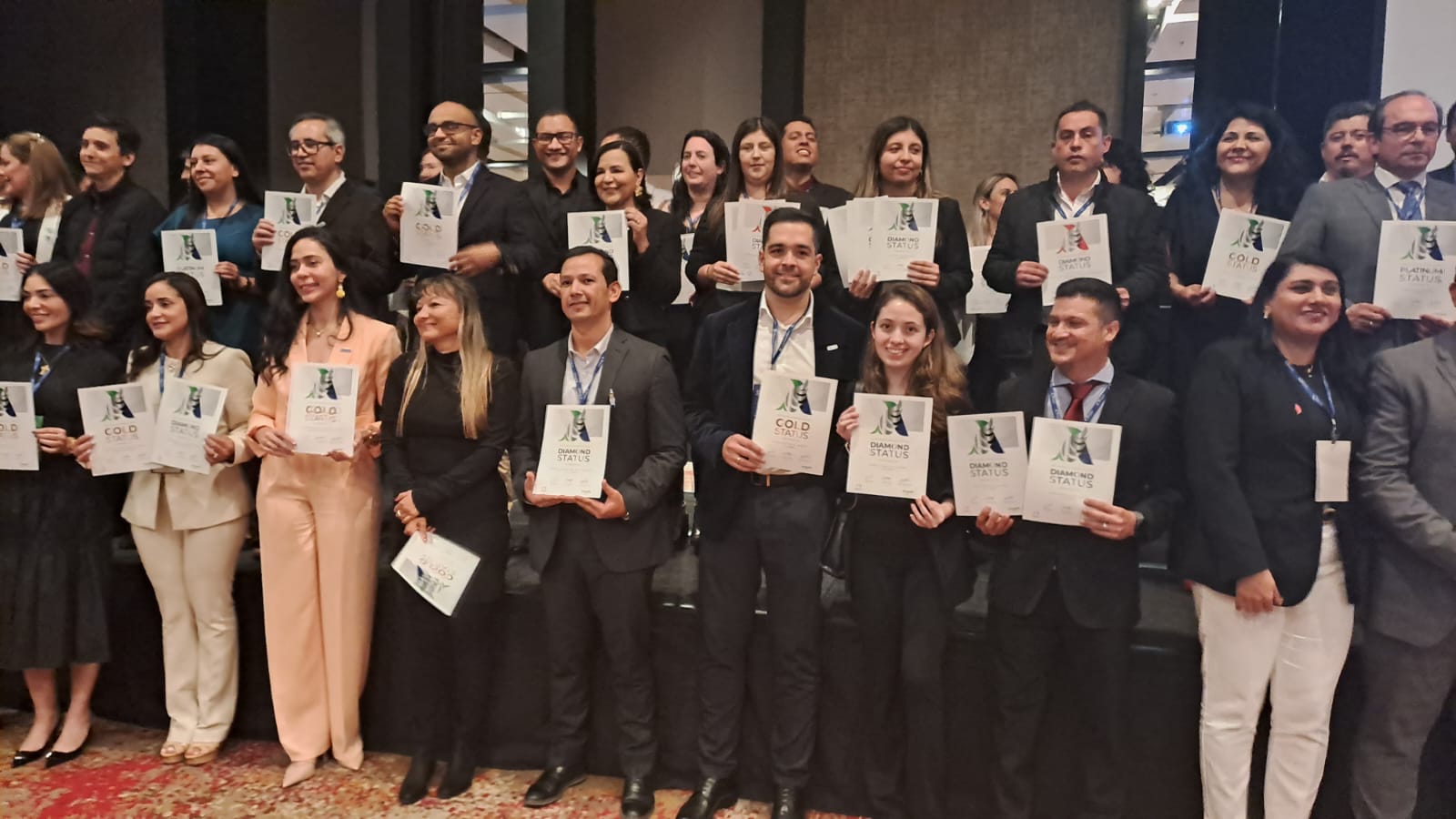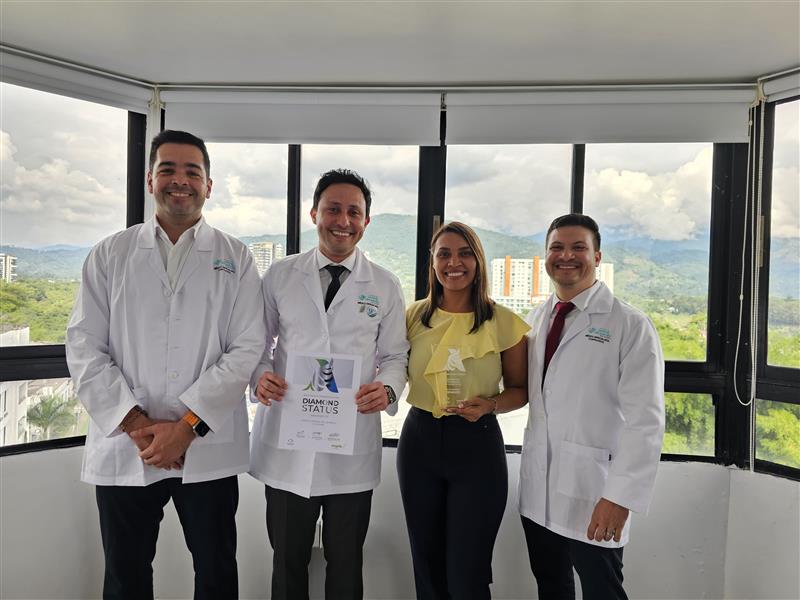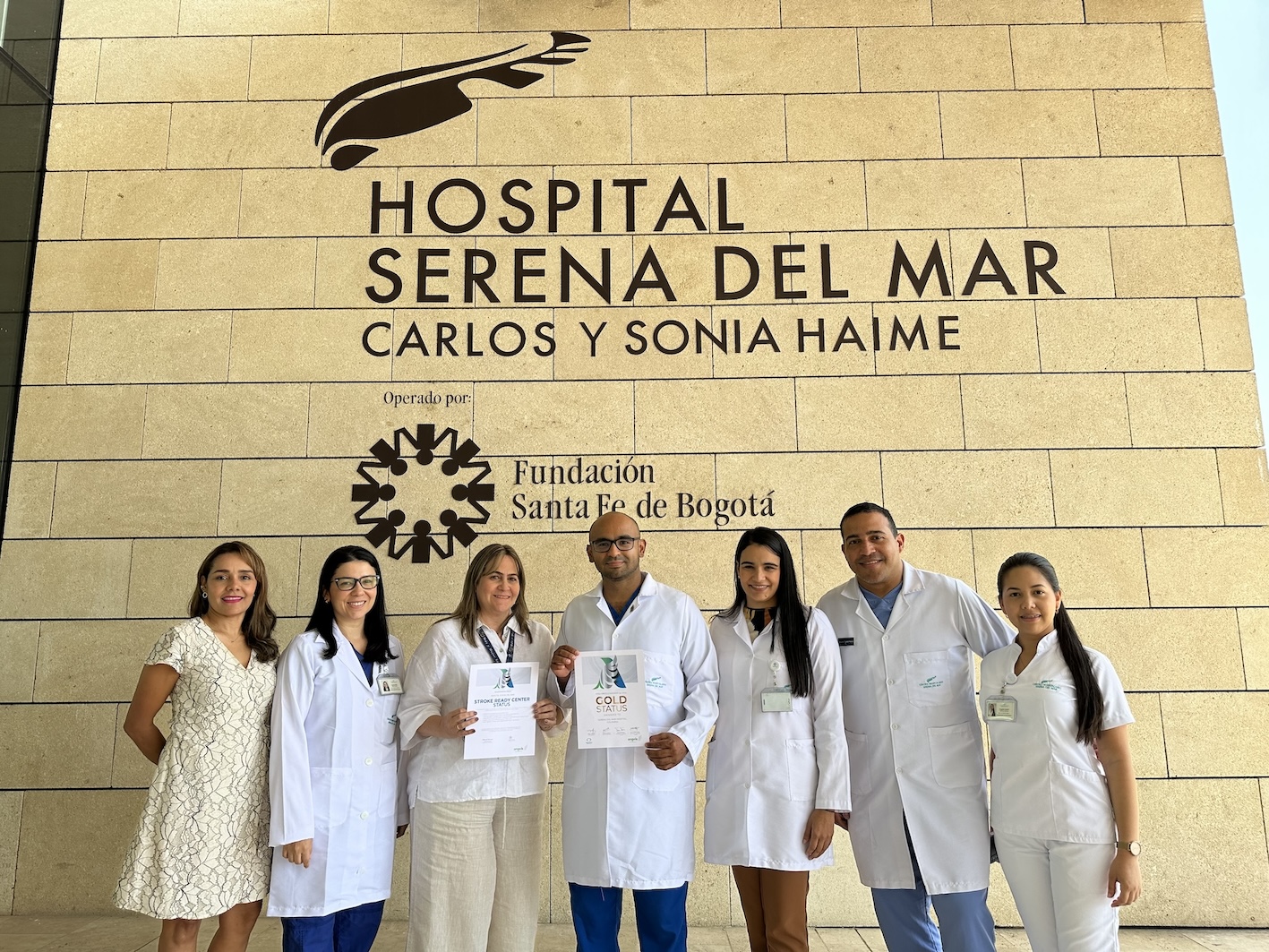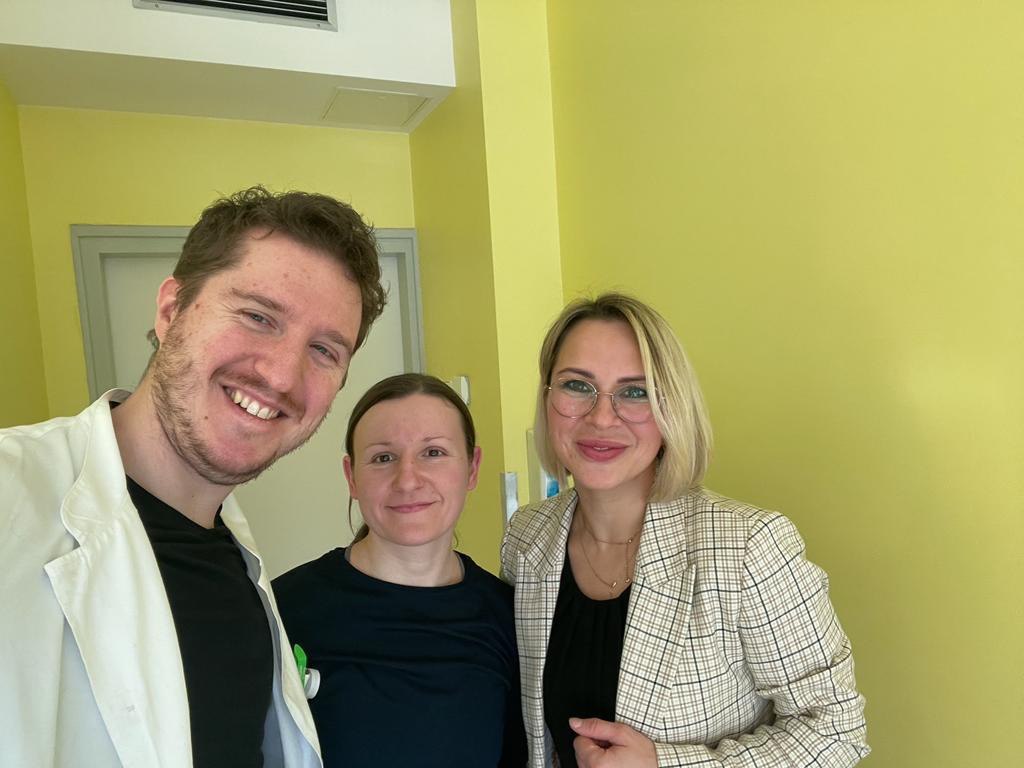
ALATMAJĄC na uwadze broszury turystyczne, Chorwacja ma więcej możliwości niż jej wizjonerskie i nieskomplikowane wybrzeże i nieskazitelne plaże.
Górna część ramienia półksiężyca jest tak zielona, jak niebieski brzeg, a to nie jest jedyną różnicą między regionami wysp i wysp. Istnieje łagodny śródziemnomorski klimat na wybrzeżu w porównaniu z ciepłymi latami i zimami kontynentalnej Chorwacji oraz wskazania (dyspirujące dla potencjalnych nabywców nieruchomości szukających widoku oceanu), które mogą kosztować około pięciokrotnie więcej na metr kwadratowy w porównaniu z tańszymi lokalami na północnym Wschodzie.
Jeszcze bardziej burzące jest fakt, że (według badania z 2015 r.) częstość występowania udar mózgu w części kontynentalnej jest o 45 procent wyższa niż na wybrzeżu, gdzie ryby, owoce, warzywa i oliwa z oliwek są regularnie spożywane.
Czas na podwojenie planów dotyczących przestrzegania diety Meditterraneana?
Jednak ta nierówność nie jest głównym powodem, dla którego konsultant Angels, Maria Sheverdina, rozpoczęła pracę w Chorwacji w regionieKoprivničko-Križevačka na północno-wschodnim granicy z Węgry. Mówi: "Kiedy zacząłem pracować w Chorwacji, zdecydowałem się na region. Okazało się również, że w Centralnej Chorwacji i szpitalach około [stolicy] Zagrzeba".
Zagreb był celem jej pierwszej podróży do Chorwacji na zaproszenie prof. Hrvoje Budinčević, który, jak również kierujący nagroda oddziałem neurologia w Szpitalu Uniwersyteckim Sveti Duh i chorwackim Towarzystwie Udarowym, zajmuje się komitetem sterującym Europejska Organizacja Udarowa (ESO) w Europie.
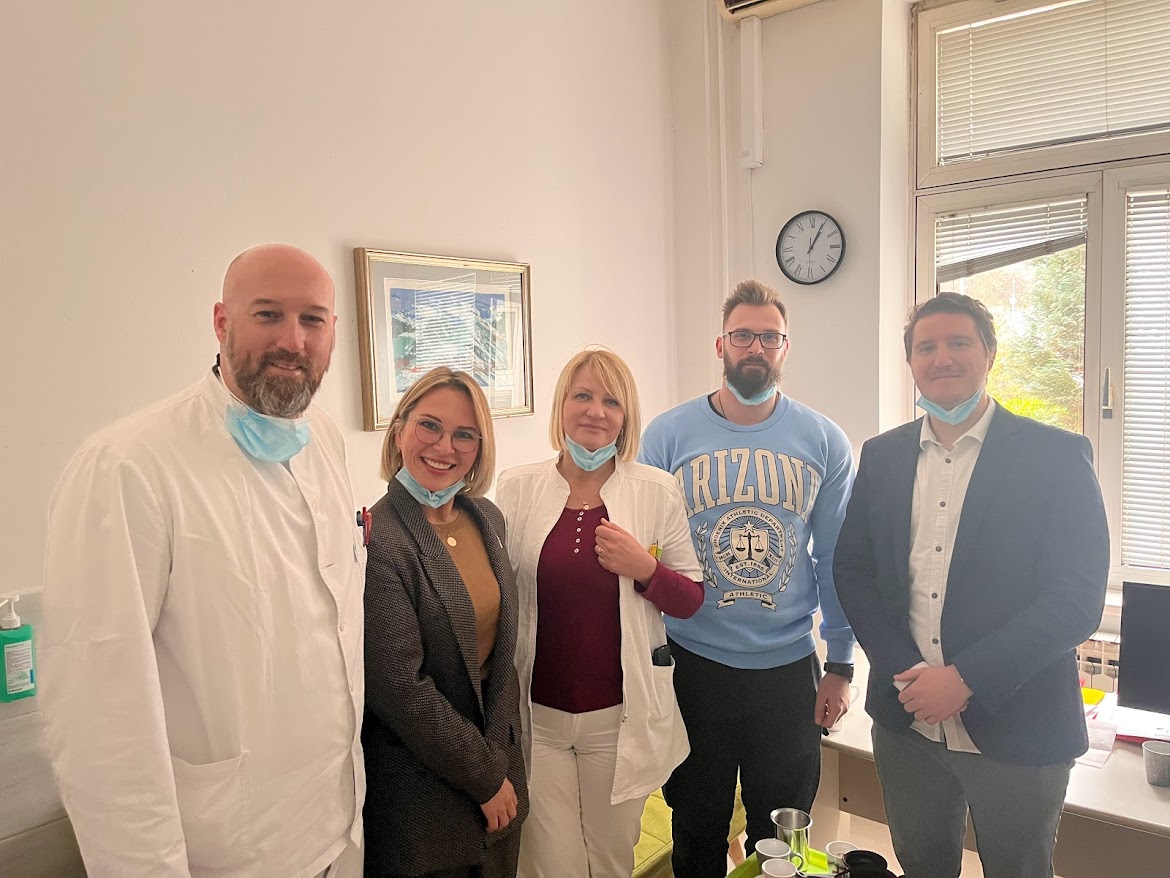
Obecny na spotkaniu był również zespół ze szpitala ogólnego "dr Tomislav Bardek" w Koprivnica, którego kierownik neurologia, dr Juraj Mark Poje, wziął udział w warsztatach Angels Train the Trainer w 2019 r.
Dr Juraj chciał wprowadzić zmiany w swoim szpitalu, aby skrócić czas oczekiwania między przybyciem a rozpoczęciem zabiegu o 85 minut, ale potrzebował wsparcia. W maju 2023 roku Maria odbyła kolejną wizytę w Chorwacji, podczas której szpital dr Juraj leczył od 2 do 3 pacjentów miesięcznie.
Dyrektor szpitala dr Mato Devčić, sam specjalista w dziedzinie znieczulenia, resuscytacji i intensywnej opieki, otworzył spotkanie, podkreślając znaczenie udar mózgu. Everyone inna osoba w sali, reprezentująca kilka oddziałów, stałaby się częścią grupy roboczej zajmującej się poprawą udar, prowadzonej przez dr Juraj, szpitalny oddział ratunkowy, dr Dijana Osman oraz pielęgniarka neurologia Gabrijela Šimunić (univ.mag.med.techn). Dołączył do nich dyrektor zespół ratownictwa medycznego (ZRM) Zlatica Kučko Gudelj (dipl.iur.) oraz lekarz zespół ratownictwa medycznego (ZRM) ratunkowego dr Ana Domjan Babić, którego entuzjazm miałby kluczowe znaczenie w strategii, która mogłaby się pojawić na spotkaniu.
Wkrótce było jasne, dlaczego czas oczekiwania między przybyciem a rozpoczęciem zabiegu w szpitalu ogólnym "dr Tomislav Bardek" był dość długi. Pacjenci z udarem przybyli do szpitala bez uprzedniego powiadomienia i zostali przyjęci na szpitalny oddział ratunkowy (SOR), który przeprowadził standardową procedurę wewnętrzną. lekarz SOR dokonał ocena i zlecił badanie TK, po którym powiadomił neurolog. Następnie neurolog zgłosił się do SOR i zbadał pacjent przed podjęciem decyzji o kolejnym postępowaniu.
Maria chciała pomóc im wdrożyć cztery kluczowe działania priorytetowe, które miały na celu skrócenie czasu oczekiwania między przybyciem a rozpoczęciem zabiegu, a powiadomienie z wyprzedzeniem było logicznym punktem wyjścia.
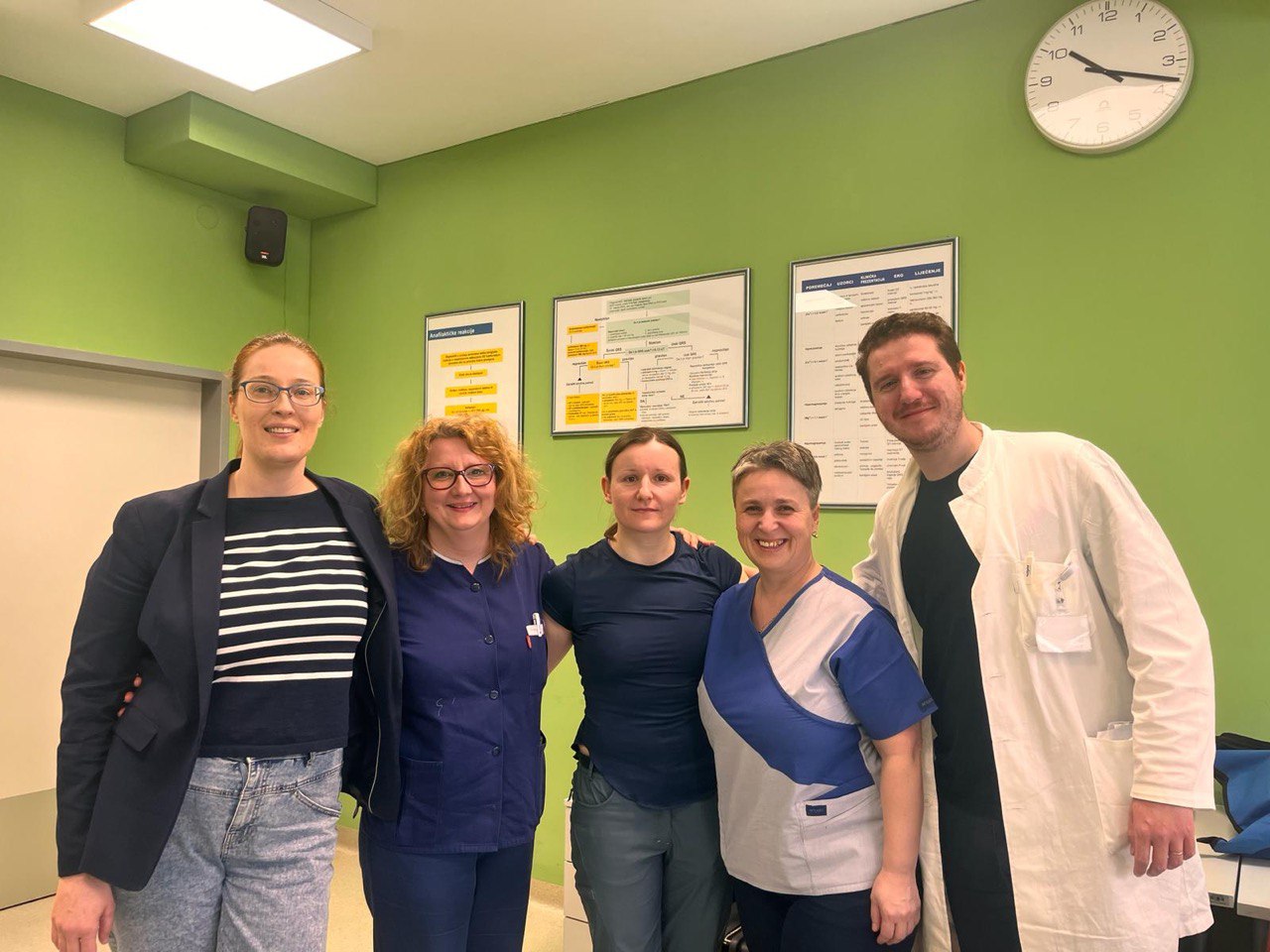
Uzgodniono, że w przyszłości zespół ratownictwa medycznego (ZRM) ratunkowe bezpośrednio powiadomi neurolog, który spotka się z pacjent przy wejściu na ratunkowy ratunkowe i będzie mu towarzyszyć bezpośrednio do momentu podjęcia decyzji klinicznej. Proces ten zostałby poparty listą lista kontrolna powiadomienia z wyprzedzeniem, którą dr Juraj przetłumaczył na chorwacki.
W celu zmniejszenia zmiany, aby zadanie wydawało się mniej zniechęcające, ustalono ponadto, że rozpocznie się miesięczny okres próbny nad 12 października 2023, aby zrozumieć, jak działało powiadomienie wstępne i listy kontrolne w praktyce.
Następna wizyta Marii w Koprivnica odbyła się 22 listopada. Był to początek zimy i w powietrzu było ukąszenie. Ale w szpitalu ogólnym "dr Tomislav Bardek" Koprivnica była cichą pobudką sukcesu. W poprzedzającym miesiącu szpital leczył dziewięciu pacjentów z udar mózgu średnio w czasie oczekiwania między przybyciem a rozpoczęciem zabiegu wynoszącym 55 minut.
Szpital ma teraz dwie ścieżki dla pacjentów z udar. Osoby, które przyjeżdżają za pośrednictwem zespół ratownictwa medycznego (ZRM) ratunkowego, są spotykane przy wejściu przez neurolog, który został powiadomiony o przybyciu. W około 25 procentach przypadków, w których pacjenci przyjeżdżają w prywatnym transporcie, lekarz oddziału ratunkowego przeprowadzi szybkie badanie przed powiadomieniem o badaniu TK i neurolog. neurolog spotka się z pacjent podczas badania TK, podczas którego lekarz oddziału ratunkowego przekaże listę lista kontrolna, która jest aktualnie dostosowywana do tego celu. Decyzje podejmowane w obu scenariuszach będą podejmowane podczas TK.
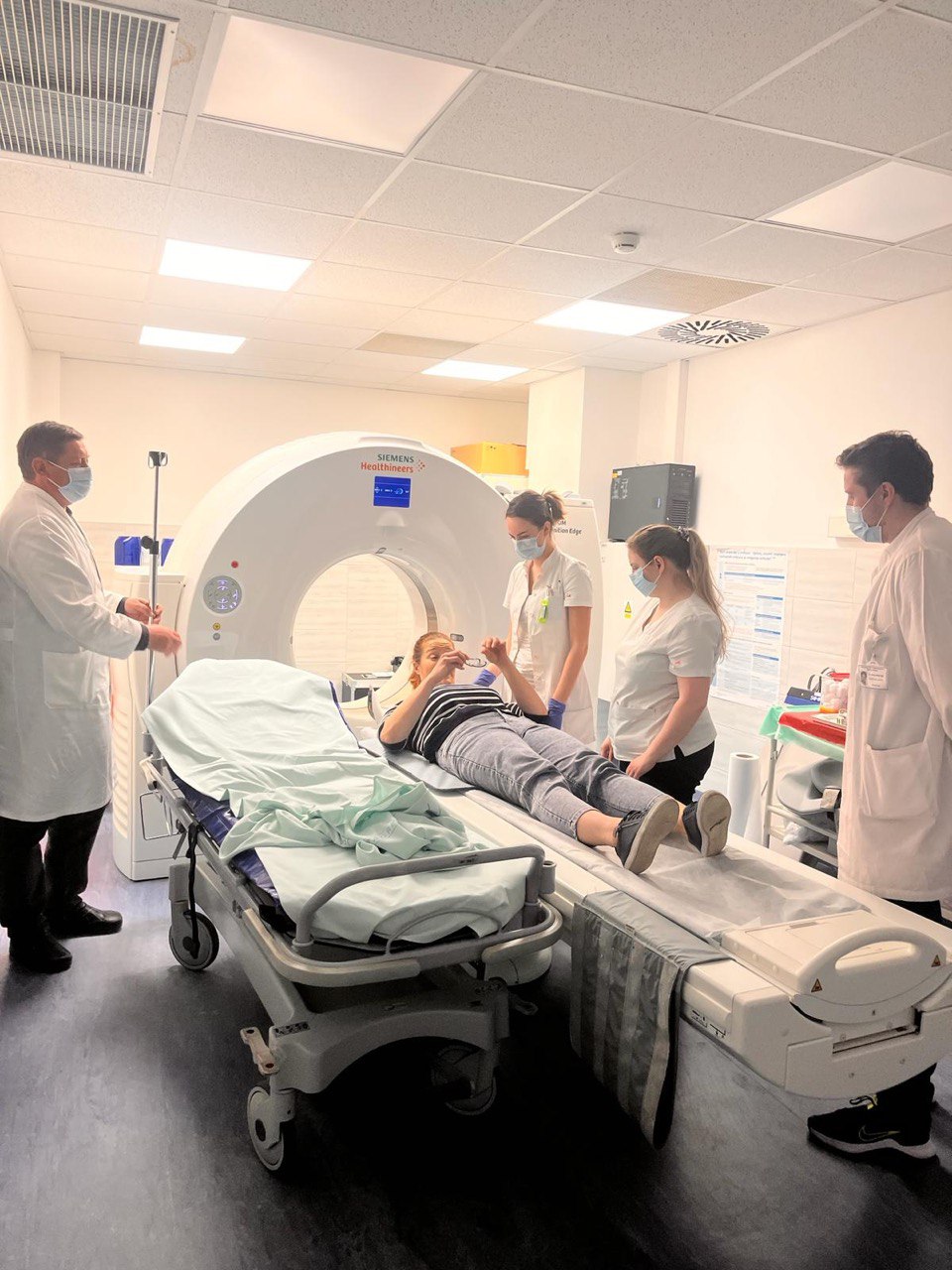
Doktor Dijana Osman ma teraz zadanie tworzenia i dostosowywania list kontrolnych dla SOR, przeciwwskazań, nowych protokołów i algorytmów szlaków, które ustandaryzują zaktualizowany szlak udar.
Te najnowsze ulepszenia są konsekwencją dwóch symulacji, które miały miejsce w marcu. W obu przypadkach symulowana ścieżka była taka sama, jak u pacjentów samodzielnie przybywających, a dr Ana Domjan Babić z zespół ratownictwa medycznego (ZRM) ratunkowego pełniącego rolę pacjent. Pierwsza symulacja została ukończona w ciągu 33 minut. Po zmianie ścieżki w celu wyeliminowania duplikacji, po dwóch tygodniach symulacja dała czas oczekiwania między przybyciem a rozpoczęciem zabiegu wynoszący 18 minut.
W czerwcu 2024 r. Koprivnica poczyni więcej postępów, przeprowadzając kolejną symulacja (tym razem obejmującą zespół ratownictwa medycznego (ZRM) ratunkowe), przegląd procesu i szkolenie dla pielęgniarek, w której udział wezmą pielęgniarki z pobliskich miast.
Dr Juraj powinien być zadowolony, ponieważ jest już entuzjazmem wszystkich członków grupy roboczej. Czas oczekiwania między przybyciem a rozpoczęciem zabiegu wynosi od 40 do 60 minut; monitorowanie jakości stało się priorytetem i zarówno szpital, jak i zespół ratownictwa medycznego (ZRM) ratunkowe są teraz w zasięgu złotych nagród.
Prognozuje się, że będzie on tak słoneczny i ciepły w środku, jak na zewnątrz.
